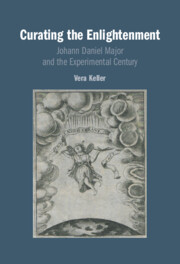519 results
Research Misconduct and Medical Journals
-
- Journal:
- Journal of Law, Medicine & Ethics ,
- Published online by Cambridge University Press:
- 27 March 2025, pp. 1-6
-
- Article
-
- You have access
- Open access
- HTML
- Export citation
The Need for Prospective Integrity Standards for the Use of Generative AI in Research
-
- Journal:
- Journal of Law, Medicine & Ethics ,
- Published online by Cambridge University Press:
- 27 March 2025, pp. 1-6
-
- Article
-
- You have access
- Open access
- HTML
- Export citation
Implementation and evaluation of a group peer mentoring and leadership development program for research faculty in academic medicine
-
- Journal:
- Journal of Clinical and Translational Science / Volume 9 / Issue 1 / 2025
- Published online by Cambridge University Press:
- 26 March 2025, e63
-
- Article
-
- You have access
- Open access
- HTML
- Export citation
9 - Conclusion
-
- Book:
- Comprehensive Deterrence Theory
- Published online:
- 06 March 2025
- Print publication:
- 13 March 2025, pp 227-240
-
- Chapter
- Export citation
1 - Introduction
-
- Book:
- Comprehensive Deterrence Theory
- Published online:
- 06 March 2025
- Print publication:
- 13 March 2025, pp 1-13
-
- Chapter
- Export citation
2 - The Need for Reconceptualizing Deterrence Theory
-
- Book:
- Comprehensive Deterrence Theory
- Published online:
- 06 March 2025
- Print publication:
- 13 March 2025, pp 14-34
-
- Chapter
- Export citation

Autistics in Academia
- Narratives of Work, Adversity, and Achievement from Around the World
-
- Published online:
- 06 March 2025
- Print publication:
- 13 March 2025
Chapter 24 - A Look Ahead for Prediction Research
- from Part V - The Future of Prediction
-
- Book:
- Looking Ahead
- Published online:
- 20 March 2025
- Print publication:
- 06 March 2025, pp 278-291
-
- Chapter
- Export citation
Description and toolkit for a research participant referral service
-
- Journal:
- Journal of Clinical and Translational Science / Volume 9 / Issue 1 / 2025
- Published online by Cambridge University Press:
- 19 February 2025, e52
-
- Article
-
- You have access
- Open access
- HTML
- Export citation
Data science and artificial intelligence in biology, health, and healthcare
-
- Journal:
- Journal of Clinical and Translational Science / Volume 9 / Issue 1 / 2025
- Published online by Cambridge University Press:
- 14 February 2025, e56
-
- Article
-
- You have access
- Open access
- HTML
- Export citation
Introduction: Russia's War Against Ukraine
-
- Journal:
- Ethics & International Affairs / Volume 38 / Issue 3 / Fall 2024
- Published online by Cambridge University Press:
- 23 January 2025, pp. 302-307
-
- Article
-
- You have access
- Open access
- HTML
- Export citation
1 - Introduction
-
- Book:
- Improving Your British Sign Language
- Published online:
- 02 January 2025
- Print publication:
- 16 January 2025, pp 1-6
-
- Chapter
- Export citation
Chapter 9 - Engaging with information
- from Part 3 - Professional communication strategies in practice
-
- Book:
- Communication Skills for Business Professionals
- Published online:
- 25 February 2025
- Print publication:
- 15 January 2025, pp 226-255
-
- Chapter
- Export citation
Learned Societies, Knowledge Production, and Public Engagement in Colonial and Postcolonial Ghana, 1930–90
-
- Journal:
- The Journal of African History , First View
- Published online by Cambridge University Press:
- 08 January 2025, pp. 1-17
-
- Article
-
- You have access
- Open access
- HTML
- Export citation
6 - Conclusions
-
- Book:
- Algorithmic Rule By Law
- Published online:
- 14 December 2024
- Print publication:
- 12 December 2024, pp 297-310
-
- Chapter
- Export citation
Chapter 2 - George Eliot
- from Part I - 1850–1900
-
-
- Book:
- The British Novel of Ideas
- Published online:
- 05 December 2024
- Print publication:
- 12 December 2024, pp 46-63
-
- Chapter
- Export citation

Curating the Enlightenment
- Johann Daniel Major and the Experimental Century
-
- Published online:
- 07 December 2024
- Print publication:
- 07 November 2024
1 - Methods in Conversation Analysis
- from Part I - Introduction
-
- Book:
- The Cambridge Handbook of Methods in Conversation Analysis
- Published online:
- 06 December 2024
- Print publication:
- 05 December 2024, pp 3-48
-
- Chapter
- Export citation
Considerations for implementing regulation of decapods in science
-
- Journal:
- Animal Welfare / Volume 33 / 2024
- Published online by Cambridge University Press:
- 27 November 2024, e55
-
- Article
-
- You have access
- Open access
- HTML
- Export citation
Surveying the Archives of the Congo Free State - The Congo Free State: What Could the Archives Tell Us? New Light and Research Perspective Patricia Van Schuylenbergh and Mathilde Leduc-Grimaldi, eds. Brussels: Peter Lang, 2022. Pp. 412. $66.95, paperback (ISBN: 9782807607361); $66.95, ebook (ISBN: 9782807607385).
-
- Journal:
- The Journal of African History / Volume 65 / Issue 2 / July 2024
- Published online by Cambridge University Press:
- 20 November 2024, pp. 267-268
-
- Article
-
- You have access
- HTML
- Export citation


